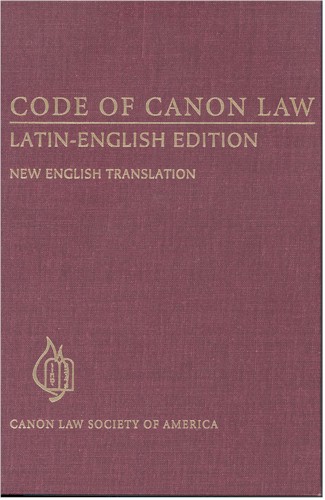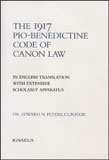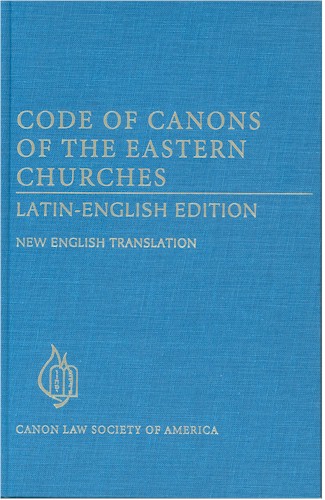|
To work for the proper implementation of canon law is to play an extraordinarily constructive role in continuing the redemptive mission of Christ. Pope John Paul II |
|
|
|
|
Resolution 1152 x 864 |
Updated 10 jan 2013 |
Review of Attila Miklósházy, Benedicamus Domino! (Novalis, 2001) = pp. |
|
Edward Peters, Review of A. Miklósházy, Benedicamus Domino! The Theological Foundations of the Liturgical Renewal, in Antiphon 9/1 (2005) 83-87.
|
This slim, unpretentious volume, simply bound on inexpensive paper, deserves to find its way into the liturgical libraries of many institutions and individuals. Before anything else, Bp. Miklósházy (appointed for the Hungarian diaspora), whose reputation for thoughtful explanations of liturgical matters well precedes him, deserves thanks for setting out so many salient aspects of liturgical learning for those of us not privileged to have experienced him in the classroom. His pages lend themselves them to a slow, I might even say, meditational-paced reading, confident that in perusing them, we are in the hands of an accomplished liturgist and teacher.
Yet, precisely because these materials are so valuable and should find a wide audience, I want to spend some time on issues that seem to me worthy of qualification, whether methodologically or, in a few places, substantively. Doing so always risks, of course, focusing more attention on differences than on the larger areas of agreement, and I would not do it unless I thought this book was deserving of genuine appreciation.
Preliminarily, although Benedicamus is billed as “an accessible introduction to the theology of liturgy”, I do not think it serves well as an “introduction” to this vast area; rather, it seems much more suitable as a midpoint review of or summation to one’s liturgical studies. Deliberately offering no footnotes or bibliography (p. 9), Miklósházy must assume that readers are familiar with the myriad of sources upon which he draws, something one simply cannot do in an “introductory” text. His command of liturgical trends and issues is sweeping, but, while those who have been working in the field for some years can follow his allusions with no difficulty (indeed, we will admire the facility with which he unites multiform liturgical themes into coherent wholes) beginning students will be lost. At a minimum, I think they risk bewilderment or frustration if this slim book shows up on a first semester liturgy reading list.
For that matter, even the subtitle, “The Theological Foundations of the Liturgical Renewal”, is a bit misleading. Approaching the book, I was thinking that “Liturgical Renewal” had in mind the process or movement by which liturgy was reformed in the late 19th and early 20th centuries, and that “Theological Foundations” of same referred to, say, the advances in Scripture studies and ecclesiology that provided the remote preparation for the subsequent works of Beauduin, Casel, Parsch and Emminghaus, and Bouyer some decades later. But those preliminary topics are scarcely touched upon. Better to subtitle it, then, “Theological Themes in the Renewed Liturgy”, for Miklósházy ably demonstrates how much the renewed liturgy, correctly celebrated, builds on and extends the great theological advances that fueled its reform over the last century, as well as where, in places, it has yet to achieve those lofty goals.
To elaborate just a bit, for liturgy students with no memory of pre-conciliar liturgies, let alone of the world to which Mediator Dei and Sacrosanctum Concilium responded, I have to explain that the issue of “concelebration”, as we use the term today, needed first to be separated from various so-called “con-celebration” errors about the priestly role in Mass versus that of the people, and that only after those dangerous leveling theories were safely set aside, could what we would call today “concelebration” issues be directly assessed. In Miklósházy hands, his statement that “Thus we can say that every Christian has the duty to celebrate the liturgy, or to ‘con-celebrate’, to celebrate this communal act together.” (p. 56) raises no questions, but it would problematic to put this notion as it stands into the minds of beginning students.
In general, any student, but especially beginning ones, would be helped greatly by identifying, even briefly, the solid grounds upon which Miklósházy stands. For example, in explaining how liturgy rests on the acknowledgment that, to put it simply, God is God and we are not, Miklósházy uses a fine “Image of God” analysis (p. 33) drawn from what I think must surely be Barthélemy. But if I am wrong in that guess, I for one would like to know who else explores the matter this way, as it is one of interest well outside of liturgical circles. Again, Miklósházy’s explanation of the three directions in time presented in sacramental actions (p. 66) is plainly Thomistic, and implicit hommages to Casel’s work, I think, are frequent. But, aside from, if memory serves, three short references to Rahner, Hitchcock, and Brown, no other authors are mentioned. All of this was, of course, the author’s prerogative, but it deserves noting in what at first seems useful as a beginning work in liturgy.
In any case, there are numerous gems in Benedicamus, far too many to list here. Lucid explanations of important points include: the three fold signification of sacraments (p.66) mentioned above; what makes a proclamation of the Word liturgical (p.70); the special character of the homily (pp. 75-76); and various aspects of the Liturgy of the Hours (pp. 77-79). Elsewhere, Miklósházy deftly sets out why, lacking as we do a fundamental image of the Holy Spirit, so few liturgical prayers are directed to the Third Person of the Trinity (p. 52) and (this time at some length) how the Fourth Eucharistic Prayer ably draws on the birkat-ha-mazon blessing formularies (pp. 108-114).
Some of Miklósházy’s observations, however, pose questions for us. Consider: “Liturgical prayer is always in the plural, because it is said in the name of the whole Church. Private prayers have no place in liturgical texts.” (pp. 64 and 83) A line like this, (nuanced as Miklósházy does elsewhere) sheds light, I suggest, on current debates over the proper translation of the Creed, a prayer that traces it liturgical origins to individual baptismal ceremonies and whose editio typica is clearly written in the singular, but for which a plural translation in the vernacular is authorized, albeit controversial. I do not pretend to know which value Church worship should honor on this question, but the choice seems to turn on more than simple fidelity-of-translation issues.
A few of Miklósházy points are tantalizingly brief, such as his analogy between the catechumenate and novitiate (p. 92) and his description of the ancient practice of initiation into sacramental life before strictly sacramental catechesis was offered (a Caselian theme, no?) If I may be permitted an aside, in my Liturgy & Sacraments classes, I find it pedagogically effective to have students begin praying the Liturgy of the Hours (a new experience for most of them) some weeks before beginning any lectures on the Divine Office. And I thought it was my idea! Sub sole nihil novum.
At the same time, one needs to be careful about using out of context some unguarded expressions as “No sacrament arises without some kind of reception on the part of the recipient (ex opere operantis)” at p. 67. Such an assertion is either only tautologically true, or is insufficient as an explanation of how sacraments that operate ex opere operato can yet remain “formless” in a given recipient, to say nothing of its obvious inapplicability to the Eucharist.
Some of Miklósházy points have important applications outside of liturgy. For example, in regretting the over-burdening of priests that has developed over several hundred years (obscuring precisely their priestly character and duties), Miklósházy regrets that at least some “teachers, social workers, and people who undertake other charitable activities” are not formally recognized as carrying on their activities in the name of the Church. The canonist in me shares Miklósházy’s concern, but is happy to report that Canon 145 (on ecclesiastical office) of the 1983 Code of Canon Law provides a solid foundation for the just the sort of recognition that Miklósházy seeks.
Speaking of canon law, there are some canonical imprecisions scattered through Miklósházy pages. They are not such as to detract from the liturgical points he is trying to make, but they should be noted: for example, Miklósházy writes about validity and liceity as being a function of a priest’s communion with his bishop (p. 63) as if communion with the Church were the only criterion for such assessments, when clearly other factors are also involved. Also, infant baptism is a “law” (1983 CIC 867) in the West, not a “custom” (p. 90). But these are small points.
The only assertion that I think is plainly misdirected is Miklósházy’s call for greater—indeed, multiple times a year—use of general absolution (p. 132). One is free to advocate a position, of course, and Miklósházy makes some interesting points in this regard, but he pays too little attention, I think, to the clear text of the law as it stands (1983 CIC 961-962) and to the telling observations made by, among others, Pope John Paul II on this question, namely, that the Scriptural accounts of various reconciliation encounters with the Lord always show Him ministering to an individual, not to a group, a pastoral point much more honored by individual and integral confession than by general absolution. Again, another reason why Miklósházy’s book is better handled by more advanced students, not beginners.
I conclude as I began with admiration and gratitude for this book. Every page teaches something of real value, or at least organizes themes in ways that make them ever more useful in one’s own liturgical studies. In particular, I think priests and deacons who are beginning to feel the years since their own formal studies in liturgy might well benefit from the Miklósházy’s ability to distill the essence of what they labored over in the classroom, and now seek to make present in their ministry at the altar. +++
|




